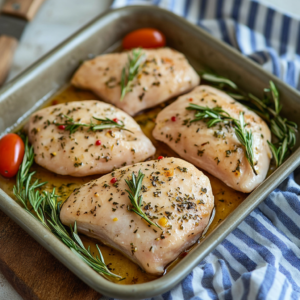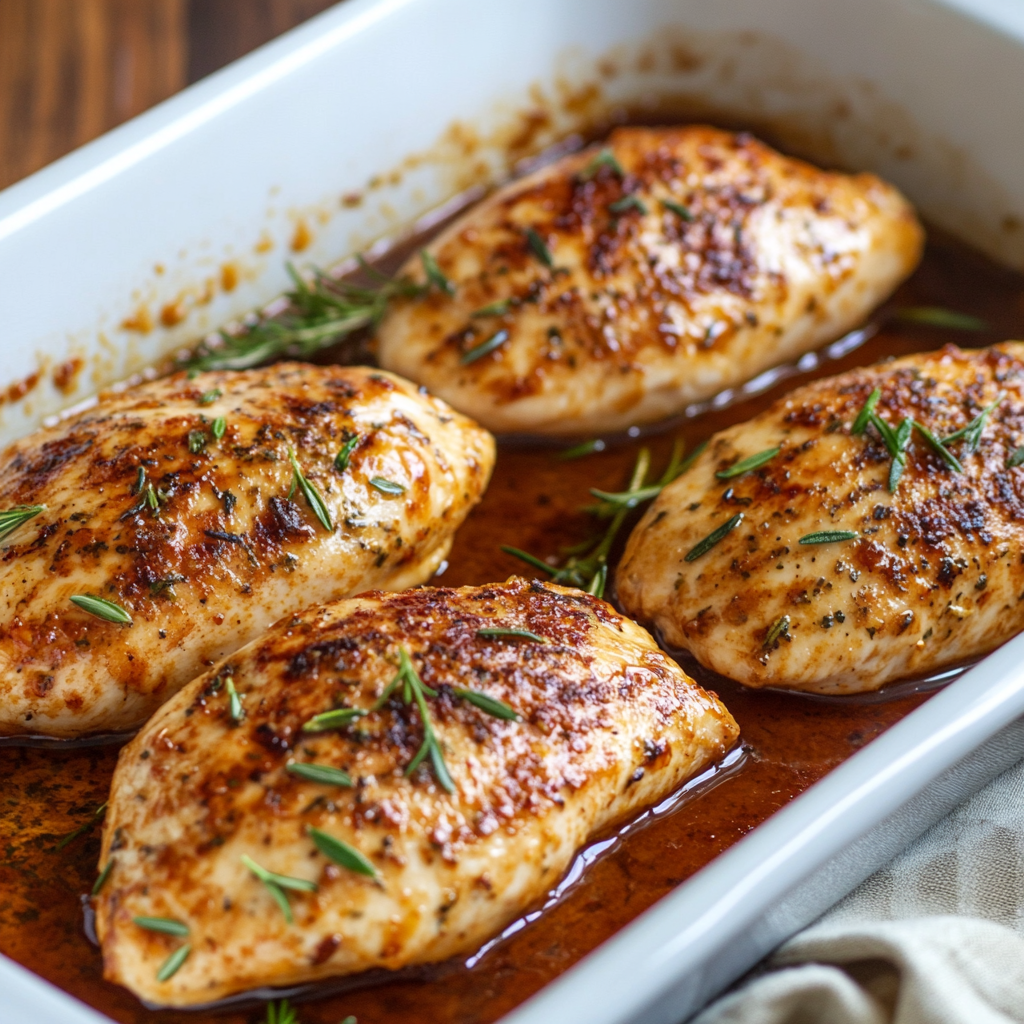Baking thin chicken breasts can be tricky if you don’t know the correct cooking times and temperatures. Whether you’re looking for a juicy, tender result or want to avoid dry chicken, this guide will provide all the essential information. From oven temperature to ideal cooking times, we’ll cover everything you need to bake the perfect thin chicken breast.
How Long Does It Take to Bake Thin Chicken Breasts?
Baking thin chicken breasts typically takes about 10-20 minutes, depending on the oven temperature. However, several factors influence the exact time, such as the thickness of the chicken, the oven temperature, and whether it’s boneless or skinless.
- At 375°F (190°C), thin chicken breasts usually take around 15-20 minutes to cook fully.
- At 400°F (200°C), they can cook in just 10-15 minutes.
- At 425°F (220°C), the time may be reduced to about 8-12 minutes.
However, these times may vary slightly depending on the thickness of your chicken breasts. For the most accurate results, you should always check the internal temperature of the chicken using a meat thermometer to ensure it reaches 165°F (74°C). This is the safe internal temperature for cooked chicken.
For more detailed USDA guidelines on chicken cooking safety, make sure to refer to the official standards to guarantee the safety of your meals.
Best Oven Temperature for Baking Thin Chicken Breasts
When baking thin chicken breasts, choosing the right oven temperature is crucial for achieving the desired texture. Here are some common temperature settings:
- 375°F (190°C): A moderate heat that allows the chicken to cook slowly and evenly, yielding a tender result.
- 400°F (200°C): This higher temperature is ideal for achieving a crispy exterior while keeping the inside juicy and tender. It usually requires a baking time of 10-13 minutes.
- 425°F (220°C): If you want your chicken cooked quickly and with a crispier outer layer, this high temperature works well, but the cooking time is reduced to around 8-12 minutes.
Each temperature has its benefits, and essential baking tips for juicy chicken breasts can help you decide which one is best based on your needs.
While these temperatures work well, keep in mind that overcooking chicken breasts, even thin ones, can cause them to become dry. So, it’s crucial to monitor your chicken closely.
Using a Meat Thermometer for Accuracy
To ensure your chicken is cooked perfectly every time, it’s essential to use a meat thermometer. The internal temperature should reach 165°F (74°C) for the chicken to be fully cooked and safe to eat.
- Insert the thermometer into the thickest part of the chicken breast to get an accurate reading.
- Avoid overcooking by removing the chicken from the oven as soon as it hits 165°F (74°C).
- Let the chicken rest for a few minutes after baking to allow the juices to redistribute, ensuring a moist and tender result.
Using a thermometer not only guarantees food safety but also improves the overall cooking experience, ensuring that your thin chicken breasts are never undercooked or overdone.
How to Ensure Your Thin Chicken Breast is Juicy and Tender
 Baking thin chicken breasts can sometimes lead to a dry result if not done correctly. To avoid this, here are a few tips:
Baking thin chicken breasts can sometimes lead to a dry result if not done correctly. To avoid this, here are a few tips:
- Season the chicken properly: Whether you prefer a marinade, rub, or just simple salt and pepper, seasoning the chicken before baking helps retain moisture and adds flavor.
- Bake on a parchment-lined tray: This helps prevent the chicken from sticking to the baking sheet and ensures a more even cook.
- Avoid overcrowding: Place each chicken breast on the tray with space around it, allowing air to circulate evenly and ensuring that each piece cooks uniformly.
Resting the chicken for a few minutes after baking allows the juices to redistribute, keeping it moist and tender.
For more ideas, you can also check out our breakfast sausage recipe to make a perfect meal alongside your chicken.
Common Mistakes to Avoid When Baking Thin Chicken Breasts
While baking thin chicken breasts seems straightforward, there are a few common mistakes that can affect the final result. Here’s how to avoid them:
- Not preheating the oven: Always preheat your oven before placing the chicken in. This ensures that the chicken starts cooking immediately and cooks evenly.
- Overcrowding the pan: When you place too many chicken breasts on a single baking sheet, they cook unevenly. Ensure there’s enough space for air to circulate.
- Not using a meat thermometer: Without a thermometer, you risk undercooking or overcooking your chicken. Ensure the internal temperature reaches 165°F (74°C).
By following these tips, you can avoid common pitfalls and bake perfectly tender chicken every time.
FAQs: What People Also Ask
How Do I Know When My Thin Chicken Breasts Are Done?
To know when your chicken is done, use a meat thermometer to check the internal temperature. Once it reaches 165°F (74°C), your chicken is safe to eat. You can also check the juices—clear juices indicate the chicken is cooked, while pink juices may indicate it’s undercooked.
Can I Bake Thin Chicken Breasts from Frozen?
Yes, you can bake frozen chicken breasts, but you will need to increase the cooking time. Bake at 375°F (190°C) for 25-30 minutes, ensuring the chicken reaches 165°F (74°C) internally.
What’s the Best Way to Cook Thin Chicken Breast for Meal Prep?
For meal prep, bake thin chicken breasts at 400°F (200°C) for about 10-13 minutes. After baking, slice the chicken into strips or cubes and store in airtight containers for easy, pre-portioned meals.
You might also enjoy our delicious hot sandwich recipes that go perfectly with your baked chicken.
Can I Bake Chicken Breasts Without Flipping Them?
Yes, you can bake chicken breasts without flipping them. However, flipping helps ensure even cooking, especially if your chicken breasts are thick. If you’re baking thin chicken breasts, flipping is usually unnecessary, but it can help with browning the edges.
How Can I Make My Chicken Breasts More Flavorful?
There are many ways to add flavor to your chicken:
- Brine the chicken in a saltwater solution before baking to enhance its juiciness.
- Use a flavorful marinade with herbs, spices, and a bit of acid (like lemon juice or vinegar) to tenderize and flavor the chicken.
- Add a seasoning rub right before baking for extra flavor.
Conclusion
Baking thin chicken breasts is simple once you understand the right oven temperature, ideal cooking times, and how to ensure your chicken is juicy and tender. By following the tips in this guide, you’ll be able to bake delicious thin chicken breasts that are perfectly cooked every time. Don’t forget to use a meat thermometer to ensure your chicken is safe and flavorful. Happy cooking!
For more meal inspiration, try out our crispy bang bang chicken recipe.

